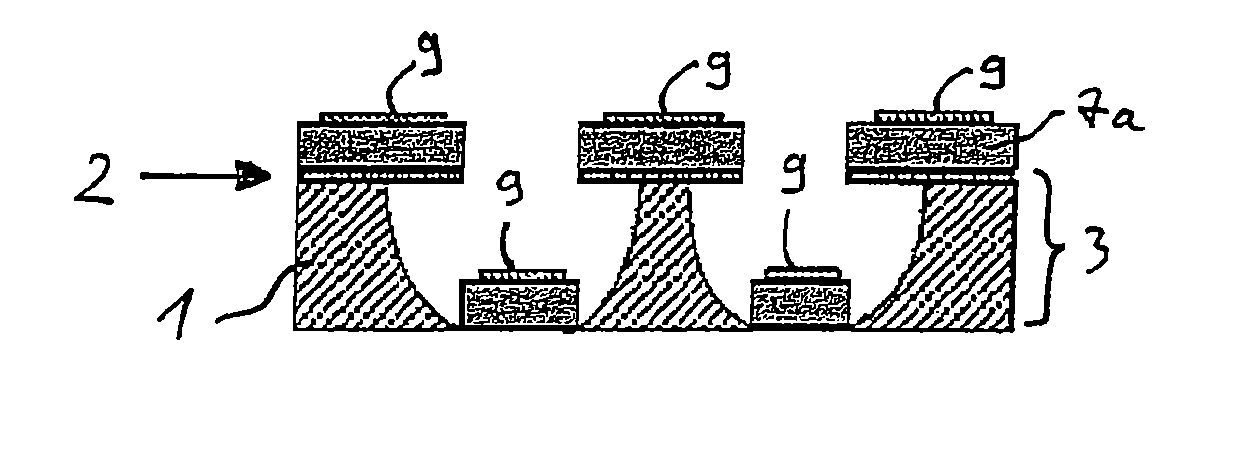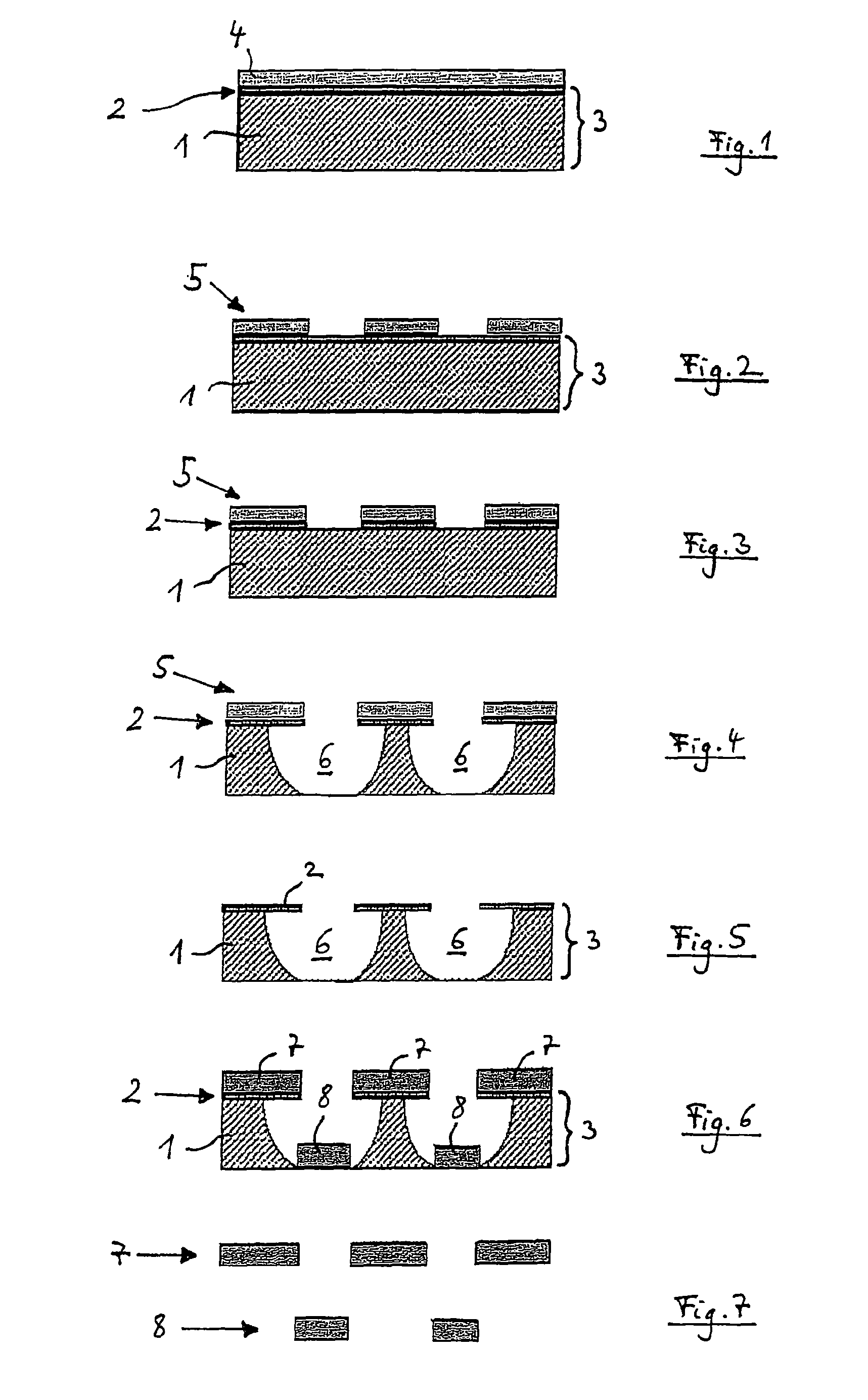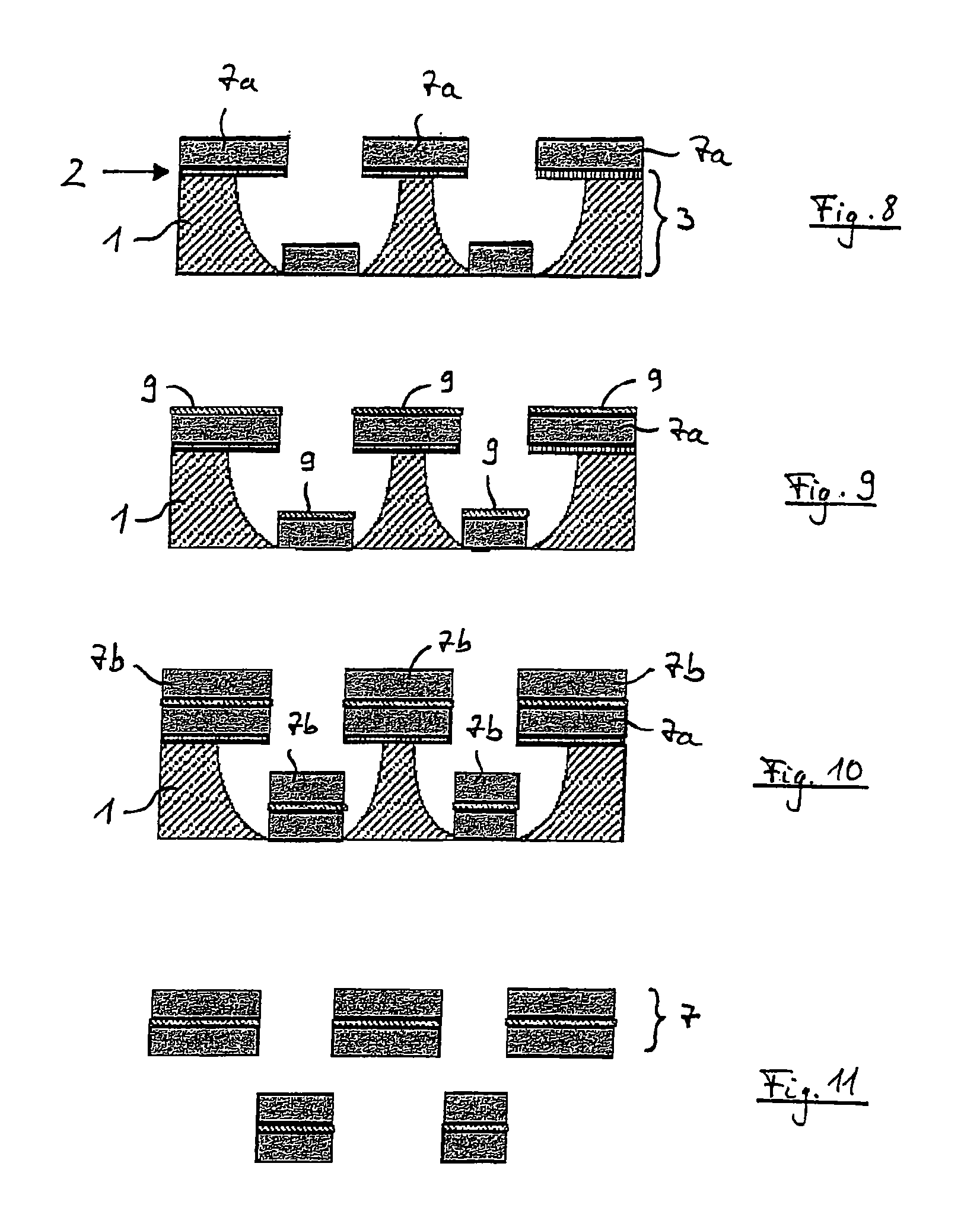Method for the production of structured layers of titanium and nickel
a technology of structured metal and nickel, which is applied in the direction of microstructural technology, ion implantation coating, decorative arts, etc., can solve the problems of further surface treatment, adverse effects on the edge structure, and the loss of structural resolution, etc., and achieves high breaking strength, easy to perform, and produced particularly quickly and cost-effectively
- Summary
- Abstract
- Description
- Claims
- Application Information
AI Technical Summary
Benefits of technology
Problems solved by technology
Method used
Image
Examples
Embodiment Construction
[0049]First of all, the basic method for production of a thin-film nickel-titanium mesh represented schematically in FIGS. 1 to 7 is described in the following.
[0050]Firstly a first sacrificial layer 1 is deposited in a thickness of over 10 μm on a substrate which is not illustrated. Immediately on top of this is deposited a substantially thinner second sacrificial layer 2 of a material with a thickness of approx. 1 μm, which can be selectively removed chemically from sacrificial layer 1. Both sacrificial layers 1 and 2, which may, for example, be composed of gold, copper or chromium, together form a sacrificial layer composite 3, onto which the desired structure is then applied by means of a lithographic process. To do this, a photo lacquer layer 4 is applied first of all as a photoresist to upper sacrificial layer 2 (FIG. 1).
[0051]This photo lacquer layer 4 is then structured by applying a lithographic process using an appropriate lithography mask and an appropriate exposure sourc...
PUM
| Property | Measurement | Unit |
|---|---|---|
| thickness | aaaaa | aaaaa |
| thickness | aaaaa | aaaaa |
| thickness | aaaaa | aaaaa |
Abstract
Description
Claims
Application Information
 Login to View More
Login to View More - R&D
- Intellectual Property
- Life Sciences
- Materials
- Tech Scout
- Unparalleled Data Quality
- Higher Quality Content
- 60% Fewer Hallucinations
Browse by: Latest US Patents, China's latest patents, Technical Efficacy Thesaurus, Application Domain, Technology Topic, Popular Technical Reports.
© 2025 PatSnap. All rights reserved.Legal|Privacy policy|Modern Slavery Act Transparency Statement|Sitemap|About US| Contact US: help@patsnap.com



